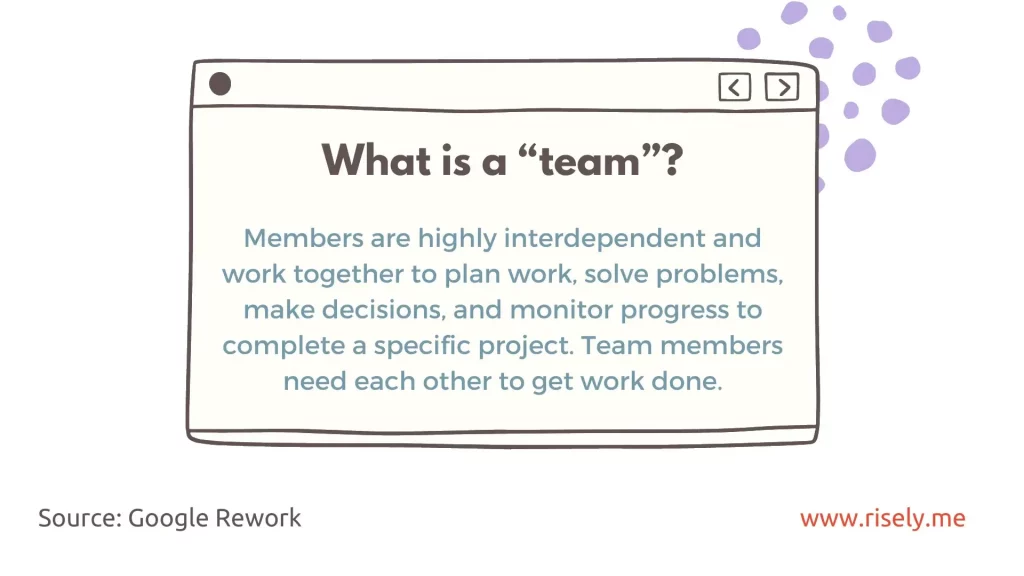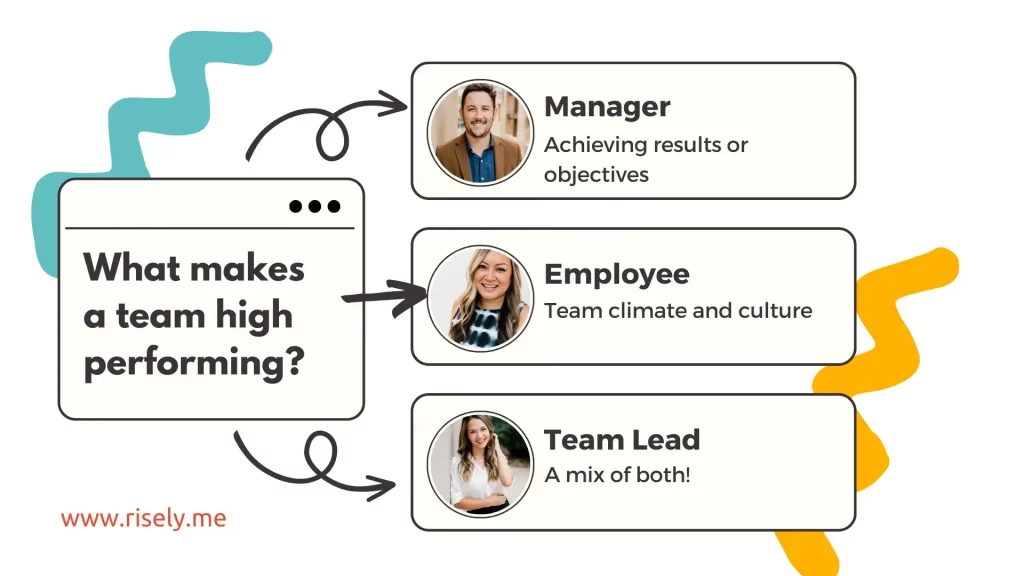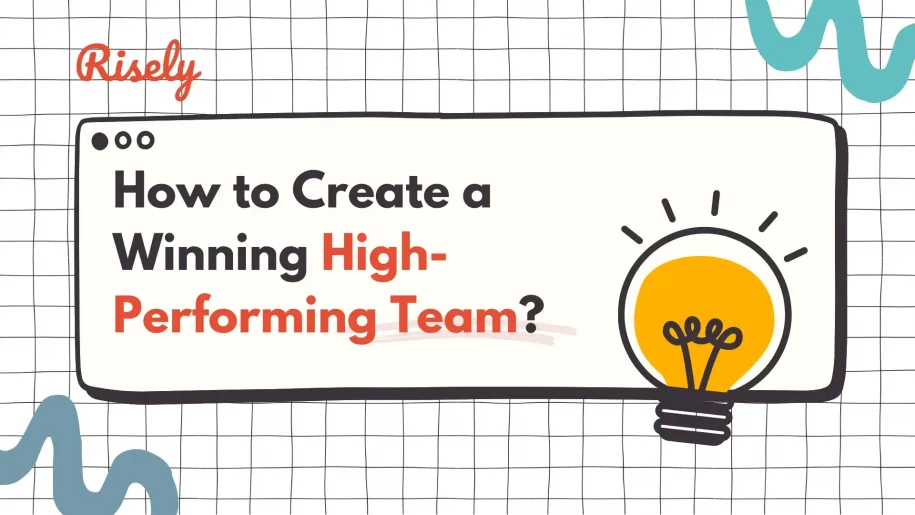How to Build a High-Performing Team?
Creating a high-performing team is a goal that every organization aspires to achieve. A high-performing team achieves superior results and can quickly adapt to changes and challenges. It is a group of individuals working together towards common goals, leveraging their expertise to drive the team’s success. In this blog, we will explore the key characteristics of high-performing teams, the importance of building such teams, and techniques for fostering and sustaining high performance. Whether you are a team leader, a member of a team, or an aspiring team builder, this blog will provide valuable insights and strategies to create a winning, high-performing team.What are High-Performing Teams?
Before we jump into the nitty-gritty of what a high-performing team entails, let’s understand something simpler: what’s a team? When we raise this question, we typically think of people who work together. That’s not wrong, but that’s not all for a team. Google’s definition of a team highlights another critical aspect, i.e. interdependence.
A high-performing team is a group of individuals who work together with a common purpose, challenging the status quo to achieve outstanding results.
High-performing teams exhibit high team dynamics, collaborating, communicating, and cooperating effectively to achieve the team’s goals. These teams consistently deliver superior results, surpassing expectations and achieving excellence in their work.What makes a team “high-performing”?
Let’s give this a minute. What would you use to define a team’s performance if you were a manager? A similar question was posted in this study, showing some interesting factors. For managers, high performance depends heavily on achieving results or objectives. On the other hand, the teams focused on the climate and culture where they worked. A third set of people, team leaders, adopted the middle ground – putting value on both results and culture to define high performance for a team. In totality, the key defining features of high-performing features include:
- A high level of trust and reliance across the board: High-performing teams are not made up of individuals who are effective contributors. Instead, high-performing teams show up when individuals come together to create effectiveness. Psychological safety is critical in this, as it enables comfort through challenges.
- Shared goals and vision: High-performing teams are united by shared goals and objectives. The team leader sets a clear vision, and each member understands their role in achieving the team’s goals. This shared purpose helps everyone align and find their place in the broader organizational context. It builds meaning in the work and emphasizes that they are generating value.
- Constructive Feedback: Feedback is integral to boosting team performance. High-performing teams provide constructive feedback to each other, helping team members improve their skills and achieve better results. This feedback culture encourages a continuous improvement mindset within the team. They constantly seek ways to enhance their performance, learn new skills, and adapt to changes in their environment.
Why do you need high-performing teams?
High-performing teams are not just nice to have but necessary for organizations that aim to thrive in today’s competitive landscape. The best part is that these teams consistently deliver superior results. Their combined efforts, expertise, and collaboration enable them to outperform other teams and achieve outstanding outcomes. Moreover, effective teams that can communicate openly, honestly, and respectfully are better equipped to handle challenges, resolve conflicts, and stay aligned toward common goals. They are agile and open to new ideas to respond effectively to market dynamics, technological advancements, and evolving customer needs. Lastly, high-performing teams are engaged and motivated to succeed. They feel a sense of ownership, pride, and purpose in their work, reflected in their commitment to achieving the team’s goals.Other Interesting Reads
How can you build high-performing teams?
Now that we understand what out dream high-performing team looks like, let’s figure out how to get there. But before heading on, it’s relevant to recognize that high-performing teams are built by many, not one. Yet, the manager or the leader can lay a solid framework for high framework by focusing on aspects like team culture, framework, and structure. A manager can also contribute heavily by modeling effective behaviors for their teams.Setting Clear and Achievable Goals
Clear and achievable goals are essential for a high-performing team. Here are some key points to consider:- SMART Goals: Set Specific, Measurable, Achievable, Relevant, and Time-bound (SMART goals). This clarity gives the team direction and purpose, ensuring everyone works towards a common goal.
- Performance Goals: Include performance goals that outline the expected outcomes, quality standards, or performance measures to be achieved. These goals help team members understand the level of performance expected from them individually and collectively.
- Alignment with Team Goals: Ensure that individual goals align with the team’s goals and objectives. Goal alignment creates a sense of shared purpose and collective effort, driving high performance and results.
- Regular Evaluation and Adjustments: Regularly evaluate progress towards goals, provide feedback, and make necessary adjustments. This continuous evaluation and improvement process keeps the team focused, motivated, and on track to achieve their goals.
Prioritizing Open and Honest Communication
Open and honest communication is crucial for building a high-performing team. Here are some key points to consider:- Transparent Communication: Foster a culture of transparent communication where team members feel comfortable sharing information, ideas, concerns, and feedback openly. Transparent communication builds Trust, enhances collaboration, and improves decision-making.
- Active Listening: Encourage active listening within the team. When team members actively listen to each other, seeking to understand before responding, communication becomes more effective and minimizes misunderstandings.
- Courageous Conversations: Create a safe environment for courageous conversations where team members can address conflicts, share differing opinions, and challenge the status quo. These conversations build Trust, drive innovation, and foster a culture of continuous improvement.
Implementing Regular Feedback Mechanisms
Regular feedback mechanisms are essential for building a high-performing team. Here are some key points to consider:- Constructive Feedback: Provide constructive feedback that focuses on behavior, performance, and areas for improvement. Positive feedback should also be given to recognize and reinforce good performance.
- Timely Feedback: Provide feedback promptly, as close to the observed behavior or performance as possible. Timely feedback allows team members to make adjustments and improvements promptly.
- 360-Degree Feedback: Encourage feedback from multiple sources, including peers, subordinates, and managers. 360-degree feedback provides a well-rounded perspective on performance and encourages team members to seek feedback and learn from others.
- Personal Development Plans: Help team members create personal development plans to guide their growth and development. These plans should include goals, development activities, and timelines, providing a roadmap for professional growth.
- Performance Assessments: Conduct regular performance assessments to evaluate individual and team performance against goals and objectives. Performance assessments provide opportunities to discuss strengths, areas for improvement, and development needs.
Empowering Decision-Making at All Levels
Empowering decision-making at all levels promotes engagement, ownership, and high performance within the team. Here are some key points to consider:- Delegate Responsibility: Delegate decision-making responsibilities to team members, allowing them to make decisions within their areas of expertise. This delegation of responsibility promotes a sense of ownership, accountability, and engagement.
- Clear Decision-Making Framework: Establish a clear decision-making framework that outlines the decision-making authority, processes, and criteria. This clarity ensures that team members understand how decisions are made and their authority level in the decision-making process.
- Autonomy and Trust: Trust team members to make decisions independently, providing guidance and support as needed. This autonomy fosters a sense of empowerment, encourages creativity, and enables teams to adapt quickly to changes.
- Collaboration and Consensus: Great managers encourage collaboration and consensus-building in decision-making. Team members should be able to contribute their perspectives, ideas, and expertise, leading to better decisions and increased collective ownership.
- Leadership Support: Provide leadership support to team members during the decision-making process. Leaders should be available to provide guidance, offer advice, and help resolve any conflicts or challenges.
Investing in Employee Development and Training
Investing in employee development and training is crucial for building a high-performing team. Here are some key points to consider:- Continuous Learning: Promote a culture of continuous learning within the team. Encourage team members to seek out new skills, knowledge, and best practices to enhance their performance and contribute to the team’s success.
- Skills Development: Identify the skills gaps within the team and provide targeted training and development opportunities to address those gaps. This skills development ensures the team has the necessary expertise to achieve high performance.
- Team Development Programs: Implement programs that build team cohesion, Trust, and cooperation. These programs can include team-building activities, workshops, and retreats designed to strengthen relationships, improve communication, and enhance team dynamics.
Conclusion
Creating a high-performing team takes effort and dedication, but the rewards are worth it. You can build a team that consistently delivers outstanding results by fostering an environment of Trust, effective communication, shared goals, and strong leadership. Managers must build psychological safety, establish the right culture, and nurture Trust among team members. Setting clear goals, prioritizing open communication, and investing in employee development can enhance team performance. High performance requires continuous learning, recognizing and celebrating successes, and implementing effective performance management practices. Despite high-performing teams’ challenges, such as burnout and external constraints, keeping motivation high is crucial. By implementing these strategies and overcoming challenges, you can create a winning, high-performing team that achieves excellence and drives success for your organization.Ace performance reviews with strong feedback skills.
Master the art of constructive feedback by reviewing your skills with a free assessment now.
Other Related Blogs
How to Set Effective Learning and Development Goals?
This blog highlights how effective learning and development goals are set, why is setting them important for your organization and what challenges you might face during this process. … Read…
Are you on track to meet your Q1 goals?
Are you on track to meet your Q1 goals? We are in the middle of the first quarter of 2024. Seems hard to believe. It surely is! ⏰ Time has…
5 Secrets Of Solid Goal Setting At Work You Can’t Miss
5 Secrets Of Solid Goal Setting At Work You Can’t Miss “I don’t focus on what I’m up against. I focus on my goals and I try to ignore the…
Understanding the world of Goal Setting Coach to reach new heights
Understanding the world of Goal Setting Coach to reach new heights Setting and achieving goals is essential for personal and organizational success in today’s fast-paced and competitive work environment. However,…


